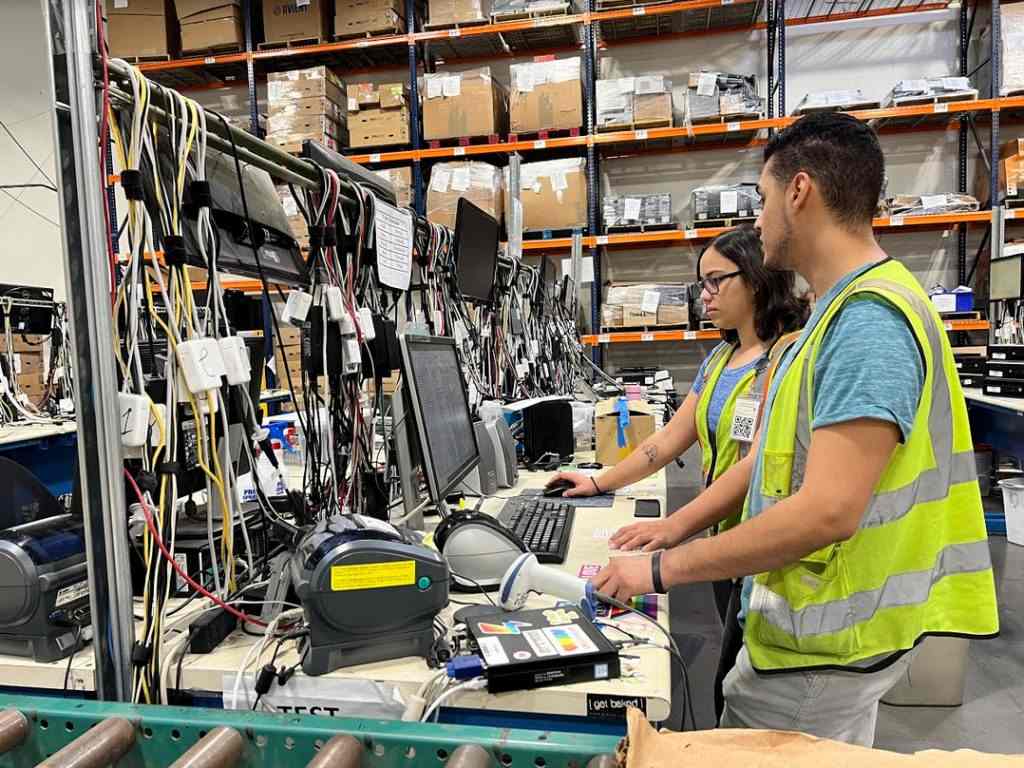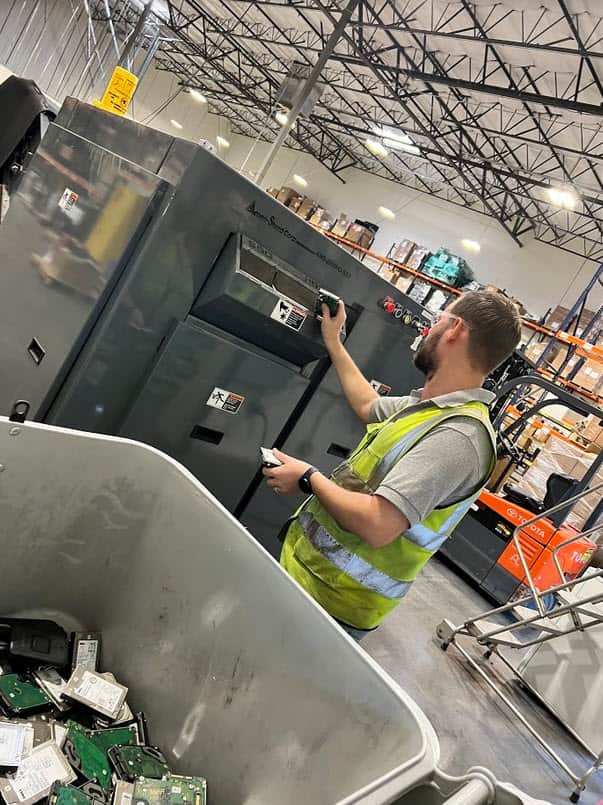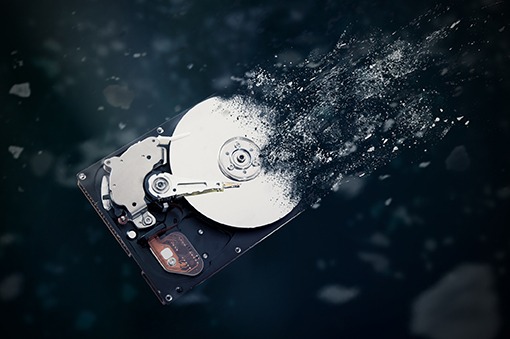Most Business professionals are aware of the risks associated with inappropriate disposal of end-of-life IT equipment. Their top concerns include loss or theft of customer or patron information and damage to organization’s reputation. Despite these concerns, there is a great deal of confusion over how to erase properly the data on end-of-life IT assets. The people we asked believed that a quick or full reformat of a drive would permanently erase all data.
Failure to properly destroy the data on end-of-life IT assets can lead to serious breaches of data-protection and privacy policies, compliance problems and added costs. There are three main options for data destruction: Wiping, Degaussing, and Physical shred Destruction.
Wiping 
This process can be done on-site or off-site depending on the client’s needs.
Our methods of wiping include the following procedures
- 1-Wipe Pass
- 3-Wipe Pass
- 7-Wipe Pass
Each method is aligned to meet all standards of secure data wiping by following the NIST 800-88 and DoD compliance regulations.
On the downside, it takes a long time to wipe an entire high-capacity drive. This process might not be able to sanitize data from inaccessible regions such as host protected areas. Another factor to consider is that overwriting works only when the storage media is not damaged and is still writable.
DEGAUSSING
Degaussing is the process of decreasing or eliminating a remnant magnetic field. It is possibly named after the Gauss unit of magnetism, which in turn is named after Carl Friedrich Gauss. Due to magnetic hysteresis, it is generally not possible to reduce a magnetic field completely to zero, so degaussing typically induces a very small “known” field referred to as bias. Degaussing was originally applied to reduce ships’ magnetic signatures during WWII. Degaussing is also used to reduce magnetic fields in CRT monitors and to destroy the data on magnetic media” according to Wikipedia.
Data is stored in magnetic media, such as tapes and hard drives, by making very small areas called magnetic domains change their magnetic alignment to be in the direction of an applied magnetic field. This phenomenon occurs in much the same way a compass needle points in the direction of the earth’s magnetic field. Degaussing, commonly called erasure, leaves the domains in random patterns with no preference to orientation, thereby rendering previous data unrecoverable. Hard drives cannot be reused after degaussing though some tapes can be reused after degaussing services.
While degaussing can be an effective method of data destruction, it has two major disadvantages. First, degaussing renders the hard drive inoperable by physically disrupting the delicate interconnected mechanisms of the drive – thus destroying any potential end-of-life value. Second, there is no way to ensure all data is destroyed. Because degaussing renders a drive inoperable, there’s no way to run the drive to verify the data is gone. The effectiveness of degaussing can also depend on the density of drives. Finally, it should be noted that degaussing does not eradicate data from non-magnetic media such as Solid-State Devices and CD’s.
PHYSICAL DESTRUCTION
If you don’t need to reuse hard drives, physical destruction is a possible data destruction option.
There can be problems with physical destruction. First, it is prone to human error and manipulation. There is no reliable way to audit the physical destruction process. Second, most methods of physical destruction leave large portions of the drive platter intact, even if the drive is inoperable.
Data could still be recovered using forensic methods in such cases. Only pulverizing the disk to particles ensures the data is irrecoverable. Lastly, since physical destruction renders media unreadable, it also prevents them from being wiped and remarketed. This means that there is no longer the opportunity to recover any end-of-life value that these assets may potentially hold.
CONCLUSION
The best method of data destruction depends upon the type of media, the sensitivity of the data, and the end-of-life value of the assets. I would recommend consulting with a IT asset disposition firm that has the expertise and scale to perform data destruction. Make sure your ITAD partner is certified by R2v3 for electronics recycling and data destruction, ISO 9001 in Quality Assurance, ISO 14001 for Environmental Management and 45001 for Health and Safety.
AmpleTech Refresh offers fully compliant, certified Data Destruction services. Located at our facilities and on location for mobile shredding services, we offer four shaft shredding technology and machinery that permits us to shred any type of material or product down to the size of a dime. Our compliance standards ensure that we will provide all our client’s video recordings of each shred job conducted, along with serialized Certificates of Destruction of all equipment shredded, on-site or off-site. Our team goes above and beyond to accommodate special requests, as we always strive to make the shredding process seamless, timely, and catered to our client’s needs.



